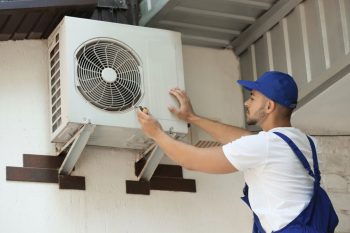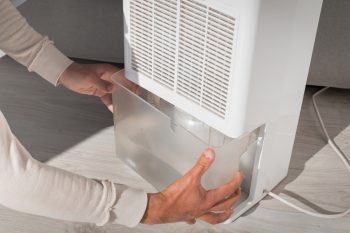
Experiencing issues with your washing machine can be frustrating, especially when it’s an appliance you rely on daily. One common problem some owners of Samsung washers face is the machine continuously filling with water. If you’re one of them, you’re probably wondering, “Why does my Samsung washer keep filling with water?” In this article, we’ll delve into the possible causes, solutions, and preventive measures for this issue.
Your Samsung washer may keep filling with water due to several reasons such as a faulty water inlet valve, a damaged water level switch, issues with the pressure hose or air dome tube, low water pressure, or a faulty main control board. You can try to fix the issue by checking these components and replacing them if necessary. If the issue persists, it’s recommended to seek professional help.
What Causes the Washer to Keep Filling with Water?
Several factors could cause your Samsung washer to continuously fill with water. Here are the most common:
1. Faulty Water Inlet Valve
The water inlet valve opens to allow water to enter the washing machine. If this valve is defective, it may not close properly, causing the washer to continue filling with water.
2. Damaged Water Level Switch
The water level switch, also known as the pressure switch, is responsible for determining the appropriate water level in the washer’s tub. If it malfunctions, the water inlet valve may not receive the necessary information to stop filling the tub with water.
3. Issues with the Pressure Hose or Air Dome Tube
The pressure hose connects the water level switch to the tub. If the hose is clogged, has fallen off, or has a hole in it, the water level switch may not function correctly, causing the washer to overfill.
4. Low Water Pressure
Insufficient water pressure can prevent the water inlet valve from closing completely, leading to overfilling.
5. Faulty Main Control Board
The main control board is responsible for timing and initiating the cycles and monitoring the washer’s operation. If there is an issue with the control board, it may not properly control the water inlet valve, causing the washer to overfill.
How Can You Fix the Issue?
If you’re comfortable with DIY solutions, here are some steps you can take to address the issue:
1. Check the Water Inlet Valve
Disconnect the power to your washer while it’s filling. If water keeps flowing, this indicates that the water inlet valve is faulty and needs to be replaced.
2. Inspect the Water Level Switch
Test the water level switch for continuity using a multimeter. If it does not show continuity between the terminals, it may be faulty and need replacing.
3. Examine the Pressure Hose
Check the pressure hose for any clogs, disconnections, or holes. If any are found, you’ll need to clean or replace the hose.
4. Check the Water Pressure
Ensure that your home’s water supply provides adequate pressure. If not, you may need to contact a plumber for assistance.
5. Inspect the Main Control Board
If you’ve checked everything else and the problem persists, you might need to inspect the main control board. This task is a bit complex, so you may want to hire a professional.
Preventive Maintenance Tips
Preventive maintenance can help you avoid future issues with your washer. Here are some tips:
- Regularly inspect your washer for signs of wear or damage.
- Clean your washer regularly to prevent buildup.
- Ensure the water supply has adequate pressure.
- Keep your washer’s software up-to-date.
- Follow the manufacturer’s recommended maintenance schedule.
When to Seek Professional Help
If you’ve tried the above solutions and the issue persists, it might be time to seek professional help. Look for a reputable appliance repair service with positive reviews, experienced technicians, insurance, and warranty options. Remember, it’s always better to seek professional help than risk causing further damage to your appliance.
In conclusion, while a Samsung washer continuously filling with water can be a nuisance, understanding the potential causes and solutions can help you address the problem more effectively. Whether you decide to attempt a DIY fix or call in a professional, remember to always prioritize safety.
Frequently Asked Questions
How can I check the water pressure in my home?
You can check the water pressure in your home using a water pressure gauge. This device can be bought from a hardware store and is easy to use. Simply screw it onto a hose bib, turn on the water, and read the pressure. The normal water pressure should be between 40 and 60 psi.
What is the typical lifespan of a washing machine?
The lifespan of a washing machine can vary depending on several factors like the brand, model, usage, and maintenance. However, on average, a washing machine should last between 10 and 14 years.
How often should I clean my washer?
It’s recommended to clean your washer once a month to prevent buildup of soap scum, hard water deposits, and other residues. This can help maintain the efficiency of the machine and extend its lifespan.
Are there any signs that my water inlet valve might be faulty?
Yes, there are some signs to look out for. If your washing machine fills slowly, has an irregular water flow, or doesn’t stop filling even after reaching the appropriate level, these could be indications of a faulty water inlet valve.
What are the risks of attempting to fix the washer myself?
While DIY fixes can save money, they come with risks. If you’re not familiar with the machine’s components and mechanics, you could potentially cause more damage, void your warranty, or even risk physical injury. Always prioritize safety and consider seeking professional help if you’re unsure.












